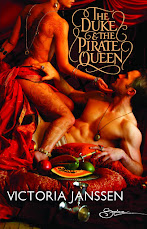I recently read, in succession, three new books by Mary Balogh, a perennial favorite of mine in historical romance. The three books about three sisters each featured a Marriage of Convenience plot, and each one approached that basic plot from a different angle.
Warning: there are some plot spoilers in this post.
 First Comes Marriage
First Comes Marriage
was the most traditional. The heroine's teenage brother, Stephen, has recently learned he's heir to an earldom. He and his sisters must enter aristocratic society, for which they are woefully unprepared. The hero, Elliott, is to be Stephen's guide, and since he needs to marry anyway, decides he will marry Stephen's oldest sister. The oldest sister carries a torch for another man, so the widowed middle sister, Vanessa, proposes that she should be the bride. The two marry fairly promptly and the story goes on from there.
Then Comes Seduction
uses avoidance of scandal as the motive for marriage. The youngest sister, Katherine, was attracted to the hero, Jasper, but unbeknownst to her, he had drunkenly wagered that he could seduce her. He almost succeeds, but then his conscience stops him; he takes blame on himself and the matter is hushed up. However, three years later, they meet again, and he is attempting to court her when the scandal is revived and they are forced into marriage. This one features a mixture of plot elements: a burgeoning ambiguous attraction before the marriage combined with revelations of character that happen afterwards.
 At Last Comes Love
At Last Comes Love
features the oldest sister, Margaret. In book two, the man with whom she'd been in love married someone else. In this book, he's widowed and back in England. Meanwhile, the scandalous hero, Duncan, has just over two weeks to marry for monetary reasons that also relate to the scandal in which he was involved years before. Again, Balogh combines elements of circumstantial forces (inconvenient lies, need for money, feelings of desperation) with courting; Margaret is attracted to Duncan, and demands to be courted, as both would like a "real" marriage to ensue. I still consider this book to be a Marriage of Convenience, because they are married long before the book is over, and numerous complications arise afterwards. To me, the essence of this plot is making something good out of circumstance, and this book definitely fits into that category. In some ways, it's similar to the second book but taken one step farther.
I'll be very interested to see if the fourth book in this series, featuring Stephen, also features a Marriage of Convenience plot.
Related posts:
Intricacies of Marriages of Convenience.
Why I Love the Marriage of Convenience Plot.
 First Comes Marriage
First Comes Marriage




Thanks for the run down, Victoria. I have these, but although I love Balogh, I've had real trouble getting into the first one. Something about the opening is so distancing for me that I just can't get sucked in. Maybe now that I understand what she's doing better, I'll have an easier time. :)
ReplyDeleteI was amused by the opening of the first one - you get a little way in, and she riffs a bit on PRIDE AND PREJUDICE for the characters' first meeting.
ReplyDeleteThey weren't my favorite of hers t o be honest-but the third was the best for me, I liked the hero enormously
ReplyDeleteDuncan rocked.
ReplyDelete